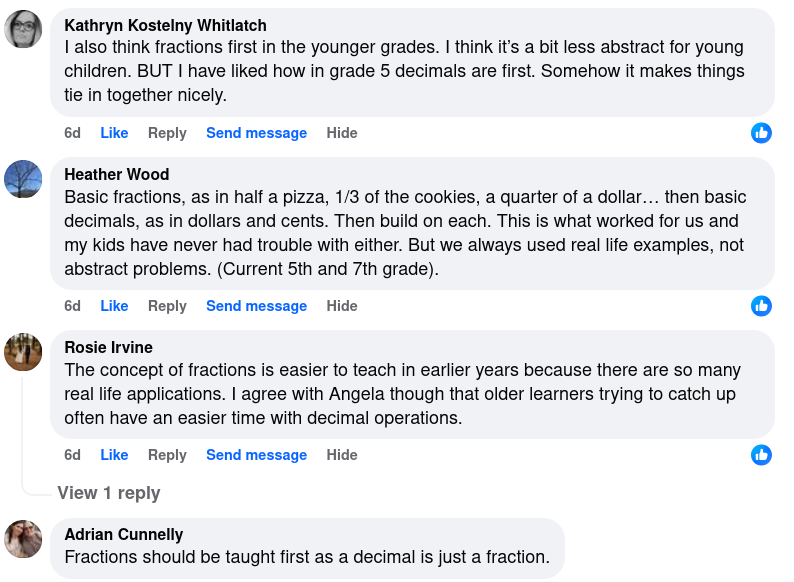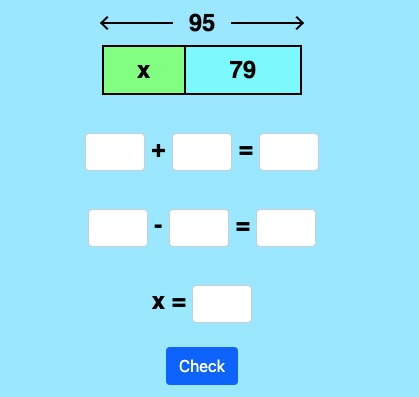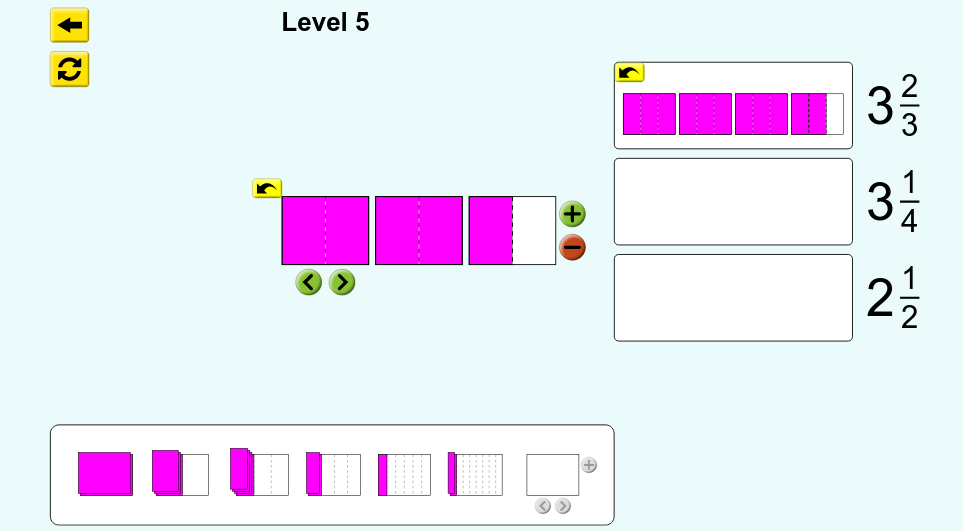
Hello again! This month's newsletter is the last newsletter for the year, and our topics are: |
1. Math Mammoth newsLulu has a 20% off promotion right now!Use code SURPRISE20 to save 20%. The offer is valid ONLY for today (through November 1, 2024). Almost all Math Mammoth books are available at Lulu. Follow links from the individual product pages at www.mathmammoth.com to Lulu. For the main curriculum, the books at Lulu are spiral bound. See this page for direct links. Or if you already know what you want, you can search at www.lulu.com. We've added a mode to the Connection between addition and subtraction activity that uses bar models. Some students have trouble with those, especially if they come to Math Mammoth in later grades. This activity only uses a very simple bar model, where students write one addition and one subtraction equation from it. To see the bar model exercises, choose "Numbers within 10-100" or "Numbers within 10-1000". The options using smaller numbers use a different visual model. Note: not every exercise shows a bar model. The activity rotates between several different types of exercises that practice the connection between addition and subtraction. Stay tuned later in November for my traditional Thanksgiving sale at MathMammoth.com website! (For digital downloads only) |
2. Fractions or decimals first?I asked a question on my FB page... Which do you think comes first, fractions or decimals? Which should be taught first?The answers were divided though most felt fractions should come first. One person said, "Fractions...because it's everywhere 😉 , dividing a pizza, or the last piece of sausage etc!" A tutor working with middle school students said, "I used to think factions but lately I’m finding that my students are having an easier time with decimal first. It might depend on the life experiences of the learner. If they haven’t done much baking or measuring with a ruler fractions could seem strange." A few more are below:  Here's my answer: If you consider what a decimal is... say, 0.2, what is it? It is two tenths, right? And that is a fraction. Therefore, for a child to understand 0.2 or 0.4 or 0.7, they need to first understand about fractions. But once they have some basic understanding of fractions and simple decimals, then it's not so clear-cut anymore. For example, some fraction arithmetic (e.g. 2/7 + 3/10) is more convoluted than corresponding decimal arithmetic. This is how it works in Math Mammoth: In grades 1-2 we only study some simple fractions. In grade 3, children study fractions, and also decimals in the context of money only. In grade 4, they will study both fractions and decimals, fractions first. In grade 5, they will study both fraction and decimal arithmetic in detail, but decimals first. |
3. Formulaic thinkingHere's something that I see people asking me quite often. They write in and ask about some specific question in the curriculum and they seem to be looking for a FORMULA and worried that their child is not getting it, hasn't learned any formula for it yet, and what to do. Here's an example from MM Grade 6-A.8. Dad drives at a constant speed of 40 miles per hour.This question is supposed to be solved, not with a formula (we will introduce that in 7th grade) but with logical thinking. Just common sense. The questions (a) and (b) are supposed to help the student think in the right direction. For example, like this. We know he drives 40 miles in 1 hour. This means: 20 miles in 1/2 hour 10 miles in 1/4 hour or 15 minutes 5 miles in.... ??? Then 100 miles. Again, you can reason this way: 40 miles in 1 hour 20 miles in 1/2 hour 100 miles? If that seems difficult, do what you can, first. E.g. solve 60 miles or 50 miles first. In (c), the first task is to find out how long it takes him to drive 30 miles. You can already see the answer by looking at what I found out above. The question is not supposed to be real difficult nor "formula-based". 🙂 |
4. Fraction & decimal activities and gamesTalking about fractions and decimals, here are the games and activities for fractions and decimals at Math Mammoth site. They're all free!
|
5. Scholarships from BrighterlyBrighterly, an online math school for K-12 children in the US, has recently launched a scholarship program for underrepresented K-12 students, including those from minority backgrounds and low-income families.Please check the information about it here. It looks interesting! |
6. Just for fun!
Thanks for reading! 🙂 Feel free to forward this issue to a friend/colleague! Subscribe here. Till next time, Maria Miller |
| Complete curriculum | Math games and interactive practice | Math Mammoth freebies | New to MM? Start here |
| Privacy & your personal data | The Lion's Roar | Blue Series: For filling in gaps |

